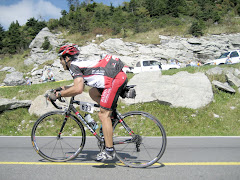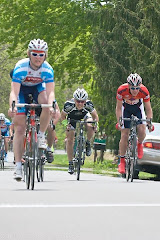Lining up for the Cat 3/4 race were only ten riders, four of which were from Team Echelon. I didn’t like those odds, especially since no other squad had more than one rider present. I just hoped to be able to withstand the onslaught.
The course is a real toughie with one solid climb heading north, one monster climb heading back south on SR 514, and series of relentless power climbs between the big climb and the finish line on SR 514.

After the first time up the 514 monster, the group was down to 6 riders, four of which were Echelon riders, me and a Savage Hill rider. I liked these odds even less than those at the start line. Going into the 2nd lap, the Echelon boys applied textbook pressure, attacking until Steve Caminati got a gap and I was unable to respond. Going over the 514 monster for the 2nd time, we lost the Savage Hill rider, so it was down to me, Joe Bonnell, Pete Czerwinski, and Will Koehler. Things looked bleak.
On the third lap, I set a steady, but not all-out pace, up the first, smaller climb. I’m not sure if it dropped Joe B., or if he had a mechanical, but he was off the back and I got a good 50 meter gap on Will and Pete. I made them work a fair bit to catch me, but they did eventually track me down. Then on the 514 monster, I was able to get enough of a gap over the top that I could hold the duo off for the 4 or so miles back into the finish.
It was good for me mentally to have a good result after struggling at the Troy crit last weekend, so I can now take a little positive attitude into the Zoar Road Race next weekend. Not too much, though… I don’t want to get an inflated head.


